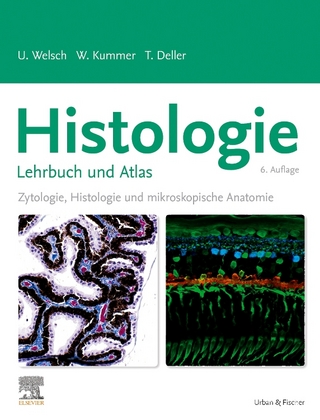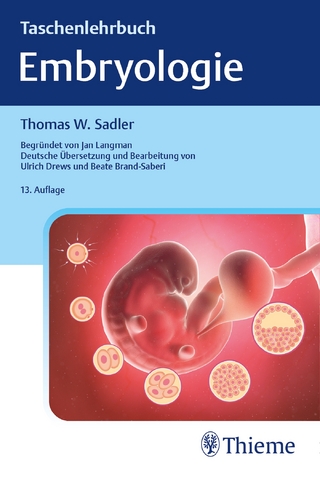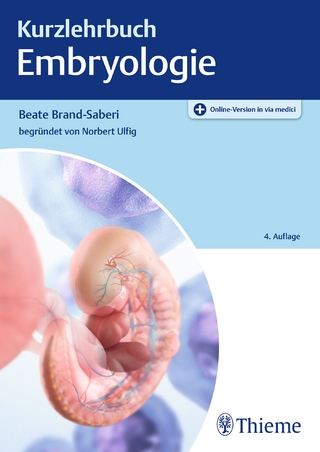
Introduction to Functional Histology
Longman (Verlag)
978-0-06-501084-8 (ISBN)
- Titel ist leider vergriffen;
keine Neuauflage - Artikel merken
This state-of-the-art textbook offers undergraduate and graduate students a complete introduction to histology. It contains end-of-chapter summary charts and a full-colour histological "look-alikes" atlas. This edition is updated and reviewed with information on a wide range of new topics, including histogenesis, endocytosis, an expanded discussion of intermediate filaments, the histophysiology of glands, haemal nodes, embryonic development of skin, foetal cortex of the adrenal gland, expanded discussion of the sertoli cell and blood supply of the endometriyu, and the development of the reticular membrane of the eye. Also investigated are the latest microscopes, such as the atomic force microscope and the confocal laser scanning microscope. The authors have included many useful insights in the "Clinical comments" sections.
Ira Rockwood Telford received his undergraduate and M.A. degrees from the University of Utah, and his Ph.D. from George Washington University. He is currently a Visiting Professor of Anatomy at the Uniformed Services University of the Health Sciences. Telford has served as Instructor and Assistant Professor of Anatomy at George Washington University, and as Professor and Chairman of Department of Anatomy at the University of Texas Dental Branch in Houston. He was Professor and Chairman of the Department of Anatomy School of Medicine at George Washington University, from 1953-72 where he became Emeritus Professor. Telford has also served as Professor of Anatomy at the Medical School of Georgetown University. He has taught anatomy to medical, dental, and graduate students for over fifty-five years. Telford is the author of a number of textbooks, monographs, and has served as an editor of numerous scientific publications. He is a member of a variety of professional associations including the American Association of Anatomists, Sigma Xi, and The International Anatomical Nomenclature Committee. Telford has received awards including a Fulbright scholarship to Great Britain, a listing in the World Who's Who in Science, and an Emeritus Scientist Award from the Society of Experimental Biology and Medicine.
Preface.
Abbreviations.
I. The Cell.
1. Cytoplasmic Organelles and Inclusions.
The Cell.
Cytoplasmic Organelles.
Cytoplasmic Inclusions.
An Analogy.
2. The Nucleus and Its Organelles.
Nuclear Organelles.
Human Chromosomes.
Cell Cycle.
II. Tissues.
3. Primary Tissues.
Epithelium.
Connective Tissue.
Muscular Tissue.
Nervous Tissue.
4. Epithelium.
Special Features.
General Classification of Epithelia.
General Features of the Types of Epithelia.
Epithelial Surface Modifications.
Functions.
Histogenesis.
5. Specializations of Epithelia: Glands, Serous and Mucous Membranes.
Glands.
Epithelial Membranes.
6. Connective Tissue I: Cells and Fibers.
Loose Connective Tissue.
Dense Connective Tissue.
Special Types of Connective Tissue.
The Macrophage System.
7. Connective Tissue II-Cartilage, Bone, and Joints.
Cartilage.
Bone.
Joints.
8. Connective Tissue III-Circulating Blood and Lymph.
Blood Cells.
Lymph.
9. Hemopoiesis.
Prenatal Hemopoiesis.
Maturation Sequences in Hemopoiesis.
Formation of Erythrocytes (Erythropoiesis).
Development of Granulocytes (Granulopoiesis).
Agranulocyte Development (Agranulopoiesis).
Platelet Development (Thrombopoiesis).
10. Muscle Tissue.
Light Microscopy of Muscle.
Electron Microscopy of Muscle.
11. Nervous Tissue.
Divisions.
Peripheral Nervous System.
The Neuron Doctrine.
The Neuron.
Nerve Degeneration and Regeneration.
Autonomic Nervous System.
III. Organ Systems.
12. Central Nervous System.
Histological Structures.
Gray and White Matter.
Spinal Cord.
Brain.
Neuroglia Meninges.
Cerebrospinal Fluid.
13. Circulatory System.
Cardiovascular System.
Lymph Vascular System.
14. Lymphatic System.
Components.
Tonsils.
Vermiform Appendix.
Peyer's Patches.
Spleen.
Thymus.
15. The Integumentary System.
Skin.
Appendages of the Skin.
16. Respiratory System.
Development.
Subdivisions.
Air Conducting Zone.
Respiratory Zone.
The Units of the Lung.
Surfactant.
Blood-Air Barrier.
Blood Vessels.
Pleura.
17. Digestive System I-Oral Cavity and Pharynx.
Oral Cavity.
Salivary Glands.
Teeth.
Pharynx.
18. Digestive System II-Alimentary Canal.
Development.
General Structural Plan Esophagus.
Stomach.
Small Intestine.
Large Intestine.
Enteroendocrine/Apud Cells.
Histophysiology.
19. Digestive System III-Pancreas, Liver, and Biliary tract.
Development.
Pancreas.
Liver.
The Biliary Tract.
20. Urinary System.
Kidneys.
Urinary Passageways and Bladder.
Urethra.
21. Endocrine System-I Pituitary and Hypothalamus.
Hormones As Chemical Messengers.
Similarities of Endocrine Glands.
Hypophysis or Pituitary Gland.
Hypothalamus-The Controller of the Pituitary.
22. Endocrine System II-Adrenal, Thyroid, Parathyroid, and Pineal.
Adrenal Gland.
Thyroid Gland.
Parathyroid.
Pineal Gland (Epiphysis Cerebri).
23. Male Reproductive System.
Components.
Testes.
Male Genital Excurrent Ducts.
Accessory Genital Glands.
Semen.
Scrotum and Penis.
24. Female Reproductive System I-Ovary.
Follicular Development.
Ovulation.
Sequels of Follicles.
Hormonal Control.
25. Female Reproductive System II-Genital Tract and Other Organs of Pregnancy.
Development.
Oviduct.
Uterus.
Cervix.
Vagina.
Placenta.
Umbilical Cord.
External Genitalia (Vulva).
Mammary Glands.
26. Organs of Special Sense-Eye and Ear.
Eye.
Ear.
IV. Tools for Learning.
27. Microscopy.
Microscopes.
Identification of Tissues and Organs.
Preparation of Microscopic Sections.
Plastic Method.
Preparation of Ultramicroscopic Sections.
Look-Alikes in Histology.
A Visual Data Base on Optical Videodisc.
References.
Index.
| Erscheint lt. Verlag | 1.12.1994 |
|---|---|
| Verlagsort | Harlow |
| Sprache | englisch |
| Maße | 218 x 285 mm |
| Gewicht | 1675 g |
| Themenwelt | Studium ► 1. Studienabschnitt (Vorklinik) ► Histologie / Embryologie |
| ISBN-10 | 0-06-501084-1 / 0065010841 |
| ISBN-13 | 978-0-06-501084-8 / 9780065010848 |
| Zustand | Neuware |
| Haben Sie eine Frage zum Produkt? |
aus dem Bereich


